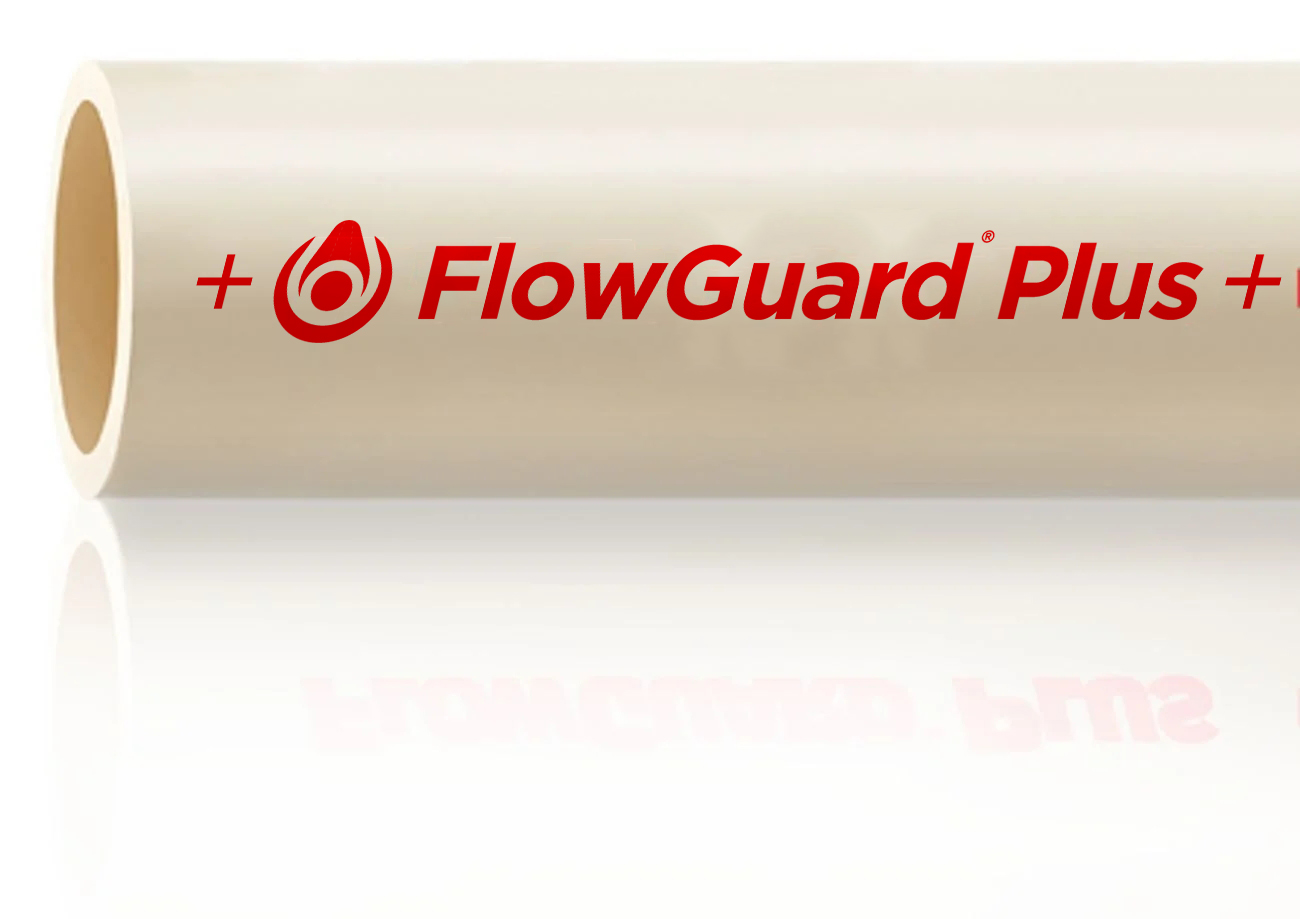
Why FlowGuard® Plus CPVC Is the Sustainable Choice
Lubrizol Corporation, the pioneer of CPVC for use in hot and cold plumbing systems, FlowGuard® Plus CPVC compound is meticulously designed to minimise our carbon footprint as well as maximise our handprint by improving performance. At FlowGuard, we work towards responsible and efficient energy consumption, an increased product life cycle, and reduced waste. We ensure that our CPVC compounds are safe for their intended use. Our compounds conform to industry standards, helping the manufacturers create sustainable hot and cold-water plumbing systems that cause minimal harm to our planet, we have also received several green building certifications making it the First Choice for Green Building Applications - GRIHA, ASSOCHAM, IGBC. We also have third-party certifications and regulatory approvals. Read this blog further to understand why CPVC is a sustainable choice for plumbing systems.
What makes FlowGuard Plus CPVC Compound sustainable?
CPVC pipes, also known as Chlorinated Polyvinyl Chloride, are sustainable alternatives to metallic plumbing systems. They are temperature and pressure-resistant and can be used in residential and commercial applications. CPVC fittings and pipes are suitable for hot and cold water systems. They are considered eco-friendly water pipes due to the following reasons:
- The CPVC manufacturing process and lifecycle in general have a lower energy footprint.
A material's sustainability is measured from the moment it is manufactured. The lifecycle of a CPVC pipe is very gentle on the environment. CPVC pipes and fittings also require significantly less energy as compared to other materials. The pipe is also made up of two-thirds saltwater-based resin and one-third non-renewable resources. - CPVCs are also considered sustainable building materials for plumbing systems because of their durability.
CPVC pipes and fittings are known for their enhanced physical and chemical properties. These properties make CPVC sturdy and durable. They are resistant to high temperatures, pressures, corrosion, and bacterial growth. Durability is a crucial aspect of sustainability because it decreases the load on manufacturing cycles and prevents excessive consumption.
How Energy Efficient Is CPVC Compared to Other Piping Materials?
CPVC compound is used for the manufacturing of pipes and fittings that are employed in the making of hot and cold plumbing systems. They are considered sustainable construction materials as they are comparatively more energy-efficient than other piping materials. Let us take you through three key areas where CPVC has a lower environmental impact.
- Energy consumption during production: CPVC manufacturing requires less energy in comparison to most other polymers due to its low petroleum content. CPVC piping transportation and processing require significantly less energy when compared to copper. This gives it a much lower potential to contribute to global warming. Additionally, CPVC uses significantly fewer fossil fuels than PPR, making it an energy-efficient option.
- Toxicity: Unlike traditional building materials, when CPVC burns, the combustion products are non-toxic. It has been found that there is no relationship between the waste chlorine content and dioxin emissions from the combustion process. Also, CPVC production does not increase the dioxin content of waste gases.
- Recyclability: Through CPVC pipe recycling, you can easily make window profiles and more. For pipe recycling, you can also grind them into pellets and granules, which can be further used as speed bumps, floor coatings, floor fittings, car mats, etc. PPR, on the other hand, cannot be recycled easily as it must be reinforced with aluminium or fibreglass.
Recyclability of FlowGuard® Plus CPVC
Plastics are generally criticised for not being "biodegradable" and for having a high environmental footprint. It is, however, not the case with CPVC, as it can be recycled into other useful products. Let us give you a glimpse of FlowGuard® Plus CPVC recycling.
CPVC Recycling During the Manufacturing Process
At this early stage in its lifecycle, almost no CPVC processing waste ever ends up in a landfill. The "in-house regrind," as it is known, is fed back into the process to create other pipes and extruded profiles for products like windows. ASTM D6263-15 recognises the use of reground and recycled plastics in this manner as long as they meet the standard's requirements. The regrind, as a thermoplastic, may be heated and pushed through a die to create a new CPVC pipe or other items.
Additionally, CPVC may be reground to create pellets and granules for use in other products. Specialised recycling companies tend to go to job sites or have take-back programmes to collect piping material and regrind it into pellets and granules. These can further be used in products like floor fillings, floor coatings, cable trays, speed bumps, and car mats.
Value of CPVC Properties in Other Products
These plastic recyclers, as per the Plastic Pipe and Fittings Association (PPFA), combine recycled CPVC with recycled PVC (vinyl) to create a compound that can be used for non-pipe products. The addition of at least 60% chlorine to CPVC increases the impact strength and temperature resistance of the new material. According to the PPFA, adding as little as 5% CPVC content to PVC improves flame and smoke resistance.
Make a Responsible Choice with FlowGuard® Plus CPVC
We hope this blog helped you understand why CPVC is a sustainable choice over other piping materials. FlowGuard® Plus CPVC, unlike PPR, is made up of a material that can be easily repurposed. Its impeccable durability and resistance to pressures, temperatures, and corrosion also make it an ideal option for hot and cold systems. So, make a responsible choice with FlowGuard® Plus CPVC and be free of worries for the next several years.
Frequently Asked Questions on CPVC Pipe Sustainability
- Are CPVC pipes sustainable?
Yes. From an ecological perspective, CPVC is one of the most sustainable piping options, as it is recyclable. It is ideal for those who want to reduce their energy consumption while also meeting industry environmental standards. - What is the useful life of a CPVC pipe?
CPVC pipes are designed to offer a service life of up to 50 years for both hot and cold water applications. - Is CPVC environmentally friendly?
Yes. CPVC has proven to be less detrimental in terms of freshwater ecotoxicity, photochemical oxidant formation, human toxicity, non-renewable energy use, climate change, and fossil depletion. Thanks to its low petroleum content, CPVC uses fewer non-renewable oil reserves, which makes it an energy-efficient process. It is also recyclable and can be reused in applications such as floor coatings, floor fittings, car mats, speed bumps, etc.

Prasenjit Misra
Prasenjit Misra, an accomplished professional, having extensive exposure in plumbing field, currently holds the position of Lead Demand Creation & Business Development of TempRite South Asia division at Lubrizol India.
